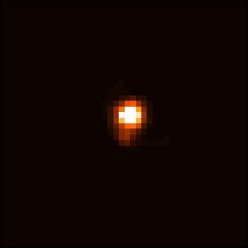
 |
The bright star is Zeta Cygni proper. Its tiny white dwarf companion, which was once the more massive star and a mighty giant that transferred some of its mass (and some heavy chemical elements) to Zeta (thus reversing the mass ratio), is the small blip at the lower left edge of the bright star's image. The two stars are here only 0.04 seconds of arc apart. From an article by M. A. Barstow, H. E. Bond, M. R. Burleigh, and J. B. Holberg in Monthly Notices of the Royal Astronomical Society. Hubble Space Telescope image courtesy of Howard Bond. |